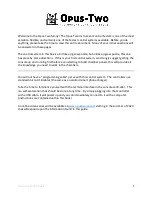
LCD Display
FAS
HDB3
QRSS
__ __ __ __ __ __ __ __ __
__ __ __ __ __ __ __ __ __
__ __ __ __ __ __ __ __ __
QRSS O153 511 NX
E1 Signal
Information
Information
Selections
F1 F2 F3 F4
The LCD Display is divided into three parts. The top line displays the E1 setups for transmitting data to
and receiving data from a remote device. The second and third lines display the information regarding
current function selection. The bottom line displays the choices within each function category. For
example, press F1 key for selecting the QRSS pattern, F2 for the O153 pattern, etc. The NX, NEXT or
MORE selection indicates more items are available when the F4 key is pressed.
LED Indicators
There are three LED indicators which are for signal, alarm and record. The green signal LED indicates the
existence of incoming E1 signal. If there is no incoming E1 signal, the green LED indicator will be off.
The red LED indicator shows incoming E1 signal problems. The red LED is a real-time indicator. If there
is any incoming signal problem then the red LED indicator will be on. If the problem ceases to exist, the
red LED indicator will turn off automatically. The yellow LED records any incoming alarms during a
period of time. If the yellow LED is on then it means there was occurrence of incoming alarm. The yellow
LED indicator will not clear itself automatically until the CLEAR button is pressed or a new test has been
started.
To start a new test, such as changing the framing pattern, changing the E1 coding, changing the test pattern,
changing a new test time period or initiating an AUTO command, will clear the yellow LED indicator as
well as reset the error counters.
Soft Keys
There are four Soft keys, F1, F2, F3, and F4, which correspond to the information displayed on the fourth
line of the LCD display. Whenever there are functions displayed on the fourth line, it means the Soft keys
are activated to be used.
5
































